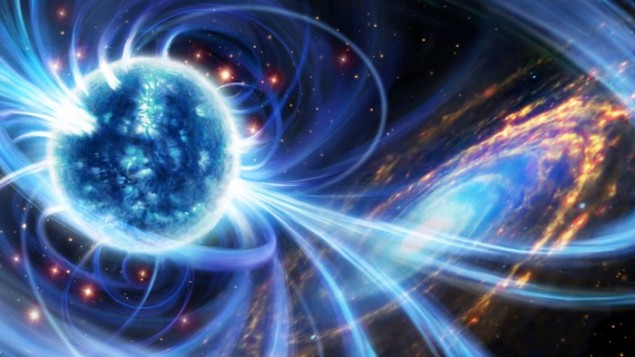
The source of fast radio bursts (FRBs) first detected in 2020 is likely to be located within a dense cluster of ancient stars, according to astronomers led by Franz Kirsten at Chalmers University of Technology in Sweden. This comes as a surprise because current theories suggest that FRBs are emitted by neutron stars called magnetars, which are not expected to be present in clusters of ancient stars.
First observed in 2007, FRBs are short, intense pulses of radio waves of unknown origin. Because FRBs are unpredictable, they have proven notoriously difficult to study. However, since 2007 hundreds of FRBs have been observed, allowing astrophysicists to develop models that predict that FRBs come from magnetars – which are neutron stars that have extremely strong magnetic fields.
To gain further insights into the origins of FRBs, the team focused on a repeating FRB source called FRB 20200120E, which was first observed in 2020 in the constellation of Ursa Major. They used the European Very Long Baseline Interferometry Network, which is a system of multiple radio telescopes located primarily in Europe and Asia. They also used data from the Karl G Jansky Very Large Array in New Mexico.
Big surprise
By using large arrays of telescopes, the team was able to pinpoint the source of the FRB to the M81 galaxy, which is about 12 million light-years away. The big surprise is that the bursts appear come from a dense globular cluster populated by older stars, which is a region where magnetars are not expected to be. This is because magnetars are thought to be created by the violent demise of younger, massive stars that can no longer support themselves under their own gravity.
The researchers believe that their observations suggest that magnetars could also be formed by older stars. This could involve an ancient white dwarf in a binary system collapsing into a neutron star after it has accreted material from a companion star. Alternatively, two ancient compact stars could merge and then explode in a “kilonova” that could leave behind a magnetar.
Crab pulsar
In a separate study led by team member Kenzie Nimmo at the Netherlands Institute for Radio Astronomy, researchers found that some of the FRB 20200120E bursts flicker on very short timescales of a few tens of nanoseconds and are very powerful. This is reminiscent, they say, of signals that come from the Crab pulsar in the Milky Way. This is a rapidly rotating neutron star that emits pulses of radiation including radio waves.
As a result, the team says that FRB 20200120E bridges the gap between the signals seen from young pulsars and magnetars in the Milky Way and the more powerful bursts emitted from distant extragalactic FRBs. This suggests that these phenomena share a common magnetically-powered emission mechanism that can operate over a wide range of timescales and luminosities.
Kirsten and colleagues report their observations in Nature, while Nimmo’s team report in Nature Astronomy.



